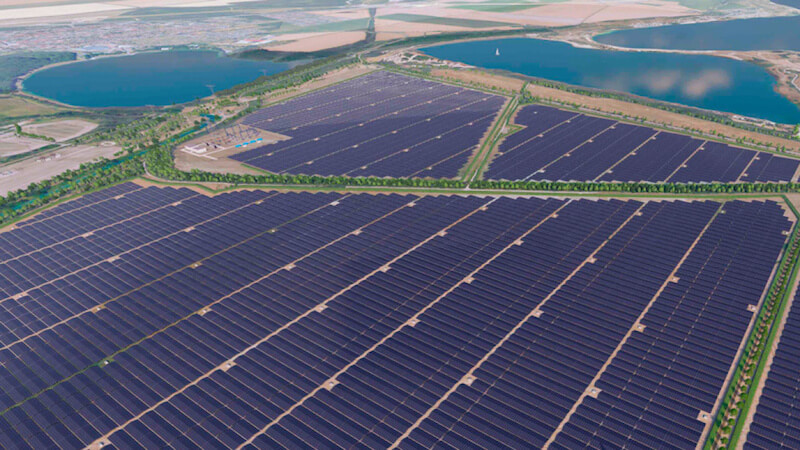Over 1 million solar modules on an old lignite mine in Saxony
The German company Move on Energy is currently building a huge solar park on the site of a former brown coal mine in Saxony. Over a million solar modules will soon supply 200,000 households there with energy.
The expansion of renewable energies is considered one of the most important measures when it comes to achieving climate goals. Because Germany wants to be climate-neutral by 2045. In order for this to succeed, more wind turbines and solar systems are needed. A 300-hectare solar park is now being built in a former lignite opencast mine in Saxony.
The history of the area is interesting. Because where dirty coal has played a role as an energy source in recent decades, there will soon be a clean alternative. The project bears the name “Energiepark Witznitz” and is being built on the lignite mine Witznitz II not far from Leipzig.
Witznitz energy park with over 1 million solar modules
Once the company has installed all 1.1 million solar modules, the system should ideally have an output of around 650 megawatts. According to the company, this is enough to supply up to 200,000 four-person households with energy. The modules are classic silicon models that come from China. Over 150,000 have already been imported.
Move on Energy emphasizes that the project is one of the largest non-governmental solar parks in Europe. In order to convert as much of the incident solar radiation as possible into electricity, the project team opted for bifacial modules. These also convert radiation that falls on the back of the panel.
Parts of the area are available for agricultural use
Since the state does not support the project, the company does not receive any feed-in tariffs and sells the electricity directly through a wholesaler. The owner also enables agricultural use on part of the area in order to make optimal use of the former brown coal mine.
After completion, the entire area will be owned by the insurance company Signal Iduna and will reliably produce energy for the next 30 years. Nevertheless, there are also critical voices against the project. After all, solar parks require a large area that cannot be used for anything else.
Also interesting:



